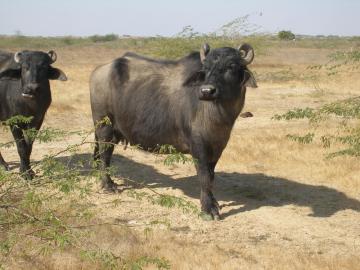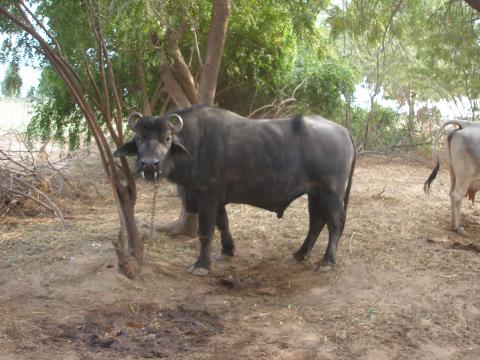
Banni buffaloes are also known as “Kutchi” or “Kundi”. The breeding tract includes the Banni area of Kutchchh district of Gujarat. The breed is maintained mostly by Maldharis under locally adapted typical extensive production system in its breeding tract. Banni buffaloes are trained to graze on Banni grassland during night and brought to the villages in the morning for milking. This traditional system of buffalo rearing has been adapted to avoid the heat stress and high temperature of the day. Banni buffalo has unique qualities of adaptation such as the ability to survive water scarcity conditions, to cover long distances during periods of drought and disease resistance. Banni buffalo is mostly black in colour. Copper coloured animals are also seen. Forehead is elongated and straight with no slope towards horn base. Horns are tightly coiled vertically with single to double coiling. The body is medium to large, compact and generally covered with hairs. Dewlap is absent and naval flap is medium. Udder is well developed, round in shape and squarely placed. The hind and fore quarters are uniformly well developed, whereas typically whole udder looks like four equal divisions with teats well attached to each quarter. Majority of animals have conical teats with round and pointed tips. Banni buffaloes yield on an average 2857.2 kg milk in a lactation with fat % of 6.65. The lactation yield ranges from 1095 Kg to 6054 Kg.
For further details please visit the following:
http://14.139.252.116/agris/breed.aspx
Compiled by Animal Breeding Group, NDDB from Information System on Animal Genetic Resources of India (AGRI-IS)- developed at National Bureau of Animal genetic Resources, Karnal, Hariana, India.

